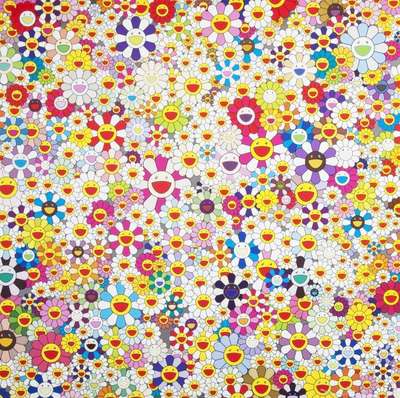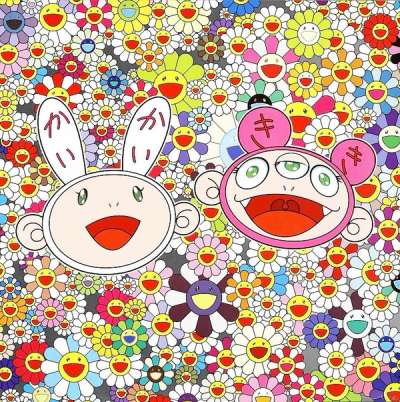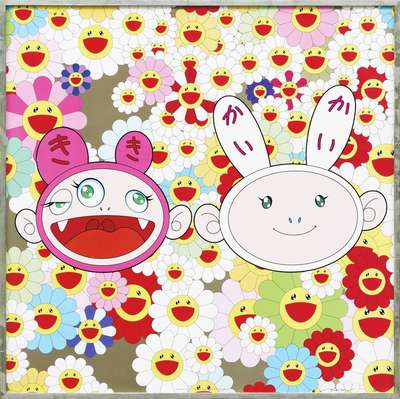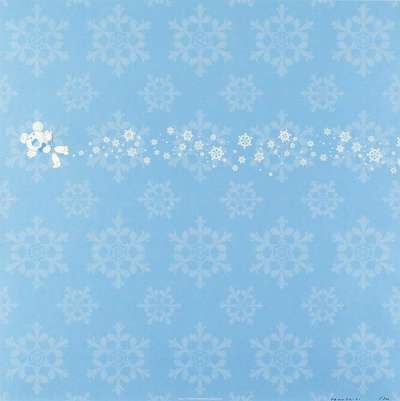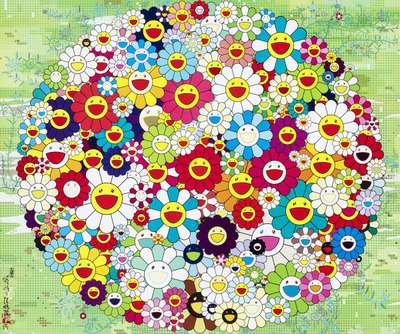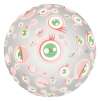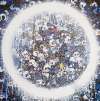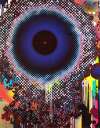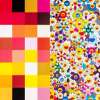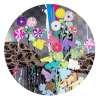Kaikai
And Kiki
Takashi Murakami created his famous cartoon characters, Kaikai and Kiki, in 2000. They are strongly rooted in Japanese cartoon style, specifically in the 'kawaii' (meaning cute) aesthetic, but they take their names from the term 'kaikaikiki'—used in the late 16th century to describe significant paintings as 'powerful and sensitive'.
Takashi Murakami Kaikai And Kiki For sale
Kaikai And Kiki Value (5 Years)
With £2000 in the past 12 months, Takashi Murakami's Kaikai And Kiki series is one of the most actively traded in the market. Prices have varied significantly – from £250 to £4429 – driven by fluctuations in factors like condition, provenance, and market timing. Over the past 12 months, the average selling price was £2000, with an average annual growth rate of 7.32% across the series.
Kaikai And Kiki Market value
Auction Results
| Artwork | Auction Date | Auction House | Return to Seller | Hammer Price | Buyer Paid |
|---|---|---|---|---|---|
 Kaikai Kiki And Me Takashi Murakami Signed Print | 17 Jun 2022 | Digard | £1,190 | £1,400 | £2,000 |
 KaiKai Kiki And Me: Open Your Hands Wide Embrace Happiness Takashi Murakami Signed Print | 19 Dec 2017 | Forum Auctions London | £1,190 | £1,400 | £1,750 |
 Kaikai With Moss Takashi Murakami Signed Print | 27 Apr 2017 | Ewbank's | £510 | £600 | £750 |
 Kaikai And Kiki: News Takashi Murakami Signed Print | 13 Dec 2016 | Phillips London | £1,828 | £2,150 | £2,900 |
 Kiki With Moss Takashi Murakami Signed Print | 17 Sept 2015 | Christie's London | £808 | £950 | £1,250 |
 Kaikai And Kiki: Snow Takashi Murakami Signed Print | 15 Jun 2015 | Cornette de Saint Cyr Paris | £213 | £250 | £350 |
 Kaikai And Kiki: Lots Of Fun Takashi Murakami Signed Print | 21 Nov 2010 | Phillips London | £3,570 | £4,200 | £5,500 |
Sell Your Art
with Us
with Us
Join Our Network of Collectors. Buy, Sell and Track Demand
Meaning & Analysis
The Kaikai and Kiki collection, produced by the renowned Japanese contemporary artist, Takashi Murakami, is a dynamic series of lithograph prints, all of which feature Murakami’s adorable cartoon characters, Kaikai and Kiki.
The artist is famous for creating an array of cartoon characters, inspired by anime and manga (Japanese cartoons and comics) that appear frequently throughout his artworks. Notable characters include Mr. DOB, whose appearance resembles that of Mickey Mouse and has come to be known as Murakami’s cartoon alter-ego, as well as the earless robotic cat, Doraemon. Kaikai and Kiki were created in 2000 and feature prominently in the works the artist has produced since then. The characters’ names come from the term ‘kaikaikiki’ which was used in the late 16th century to describe the work of the painter Eitoku Kanô who produced paintings that were both ‘powerful and sensitive’.
Kaikai and Kiki have a kawaii (cute) aesthetic, with round eyes and fluttering eyelashes, big grins and rabbit-like ears. Murakami adds the original Japanese lettering that denotes the term ‘kaikaikiki’ to the ears of the cartoon characters. The artist hoped that the characters and their strange appearance would encapsulate the dichotomies represented by the term: things that are bizarre, yet refined, delicate yet bold. As well as appearing in these prints, Kaikai and Kiki have featured in a wide range of other paintings produced by Murakami and have also appeared in films produced by the artist.
Discussing how he chose the character names, Murakami explains: “This term, that was used by an art critic in the late 16th Century... embraces several different notions: bravery and power, with all the seductiveness those traits may have and at the same time a keen sensitivity. This was the mixture of qualities that was considered elegant at the time, aesthetically speaking... And since I found the expression kikikaikai had a very attractive sound and because the names suited them, I baptized these two characters Kaikai and Kiki”.
Kaikai Kiki is also the name of Murakami’s factory-size studio, which is based in Miyoshi, an industrial area outside of Tokyo.


